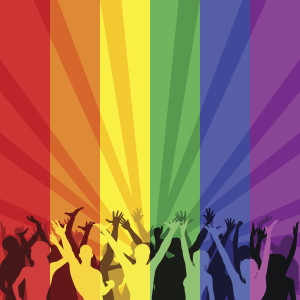
Until the late 20th century, gays and lesbians had to hide their sexual orientation. Gay men were arrested at a much higher rate than gay women, because the laws weren’t on the books to prevent a lesbian relationship. Women who lived with another female were considered spinsters. The relationship was thought to be asexual. In the 19th century, a lesbian might be institutionalized in a home for the mentally ill. However, many women stepped up and fought for civil rights for the LGBT community. These women took on legal issues that are taken for granted today.
Publishing and Literature
Alice B. Toklas and Gertrude Stein went to Paris to live as an openly gay couple. In 1933, Stein published “The Autobiography of Alice B. Toklas,” which would go on to become a bestseller, even though lesbian literature was often censored. Radclyffe Hall published “The Well of Loneliness” in 1928. It was banned in England, and she lost her first American publisher. Another publisher took it on. The book was priced at double the price of a regular novel, and it still sold more than 100,000 copies in its first year. “The Well” came under fire for obscenity. The ACLU argued in court that the book had literary merits. The New York Court of Special Sessions agreed. The book was cleared to be sold.
Much of the early lesbian literature was tragic. The book might end with a suicide of the lesbian protagonist or she might be converted to heterosexuality. Hollywood was prohibited from depicting homosexuality until 1967 under the Hays Code. In 1947, Edith Eyde published a magazine for lesbians, “Vice Versa: America’s Gayest Magazine.” She found that she couldn’t mail the issues because of possible obscenity charges. Only nine issues were produced. Publications that addressed homosexuality would be considered obscene until 1958.
Moving Forward
Alfred Kinsey, although not a lesbian, published “Sexual Behavior in the Human Female” in 1953. This book was a landmark publication for lesbians. His studies brought attention to the LGBT community, noting that 20 percent of the women studied had had one or more homosexual encounters. It was during the 1950s that the civil rights movement began. Four lesbian couples founded the Daughters of Bilitis (DOB) in 1955. This would be the first U.S. national social and political organization that addressed lesbianism. Due to obscenity laws being lifted, the monthly magazine flourished. Kay Lahusen, an openly lesbian photojournalist, provided photos of lesbians for the cover. Although DOB would end in 1970, this organization gave birth to information and resources for the gay community, and it would host protests leading to changes in the government.
The DOB sponsored demonstrations following the Stonewall Riot, which is considered the event that began the modern LGBT civil rights movement. Martha Shelley was in Greenwich Village during the riot. She and a group of others were forming a Boston DOB chapter. It was her political awareness that moved the DOB to hold a protest march. Shelley would go on to be one of the first to join the Gay Liberation Front.
Lesbianism and Feminism
In the 1970s, when feminism came to the forefront of the political agenda, the National Organization for Women was forced to address whether lesbianism was a feminist issue. Betty Friedan, NOW president, did not agree with the participation of lesbians as part of the cause. In fact, she fired Rita Mae Brown, the openly gay editor of the NOW newsletter, but Brown remembers resigning. Brown would go on to become a bestselling author. Her first novel, “Rubyfruit Jungle,” is considered one of the first literary lesbian novels.
There’s no way to cover all the great women who had a hand in obtaining civil rights for gays and lesbians. Over the next few weeks, we want to provide more information about LGBT history and those who made a difference.

